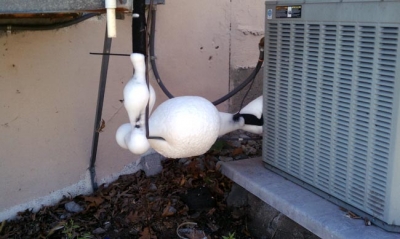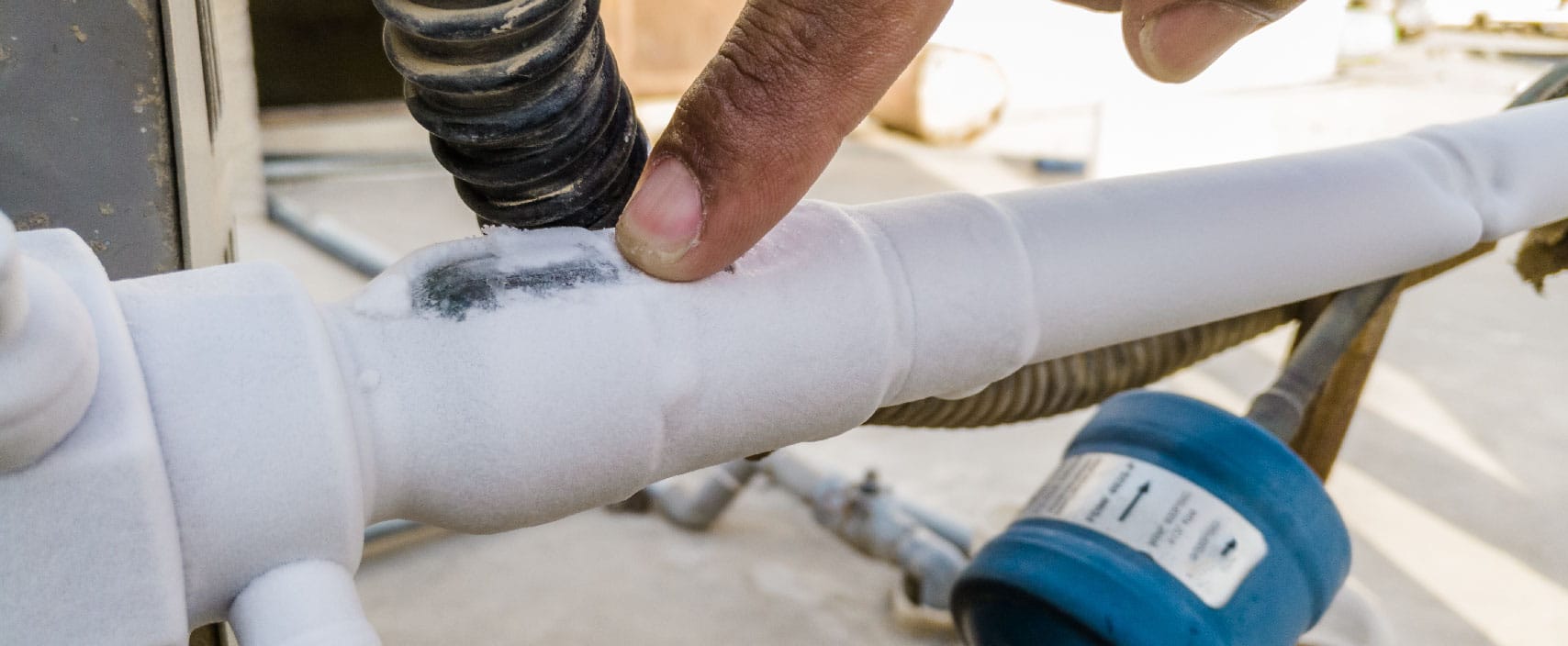Steps to Follow If Your AC Pipe Freezes: Essential Advice
Steps to Follow If Your AC Pipe Freezes: Essential Advice
Blog Article
How do you feel in regards to How can I fix an air conditioner’s frozen pipe??

Introduction
Finding that your a/c pipeline is iced up can be worrying, specifically throughout warm summer months when you rely on your air conditioner the most. Comprehending what to do in such a situation is essential to prevent additional damage to your air conditioning system and ensure your comfort inside.
Comprehending the Causes
A number of elements can add to the freezing of an air conditioner pipeline. Understanding these causes can help you address the problem effectively.
Lack of Airflow
One common reason for an icy AC pipe is inadequate air flow. When the airflow over the evaporator coil is limited, it can cause the coil to drop below freezing temperature, bring about ice development on the pipeline.
Reduced Refrigerant Levels
Not enough cooling agent degrees in your air conditioner system can additionally lead to an icy pipeline. Low cooling agent levels can create the pressure in the system to go down, causing the cold of moisture on the evaporator coil.
Winter Conditions
In cooler climates, freezing temperature levels outside can add to the freezing of a/c pipelines. If your air conditioning system is not properly protected or if there are leakages in the ductwork, chilly air can penetrate the system, causing the pipe to freeze.
Dirty Air Filters
Unclean or clogged up air filters can restrict air movement in your air conditioning system, bring about different issues, consisting of an icy pipeline. It's necessary to replace or clean your air filters on a regular basis to guarantee correct airflow and stop ice buildup.
Indications of a Frozen Air Conditioning Pipe
Recognizing the indications of an icy AC pipe is essential for punctual action.
Minimized Airflow
If you discover a significant decline in airflow from your vents, it can suggest a frozen pipeline.
Ice Buildup on the Pipe
Visible ice build-up on the refrigerant line or the evaporator coil is a clear indication of a frozen air conditioner pipe.
Weird Sounds from the Unit
Uncommon audios, such as hissing or bubbling, coming from your a/c device can signal that there's ice existing on the pipeline.
Immediate Actions to Take
When confronted with a frozen air conditioning pipe, it's vital to act quickly to prevent further damage to your air conditioning system.
Turning off the AC
The first step is to switch off your a/c to prevent the system from running and aggravating the problem.
Checking for Blockages
Inspect the location around the interior system for any obstructions that may be obstructing airflow, such as furniture or drapes.
Thawing the Pipe
You can utilize mild techniques like putting towels soaked in warm water around the frozen pipe to help thaw it gradually.
Preventive Measures
Taking safety nets can aid avoid future events of a frozen air conditioner pipeline.
Normal Maintenance Checks
Schedule routine upkeep contact a specialist HVAC service technician to make sure that your AC system is running efficiently.
Transforming Air Filters
On a regular basis change or clean your air filters to avoid air movement restrictions and preserve optimum performance.
Protecting Exposed Pipes
If your a/c pipelines are revealed to cold temperatures, take into consideration insulating them to prevent freezing during winter months.
Seeking Professional Help
If DIY techniques stop working to resolve the issue or if you're uncertain about how to continue, it's ideal to look for support from a qualified HVAC professional.
When DIY Methods Fail
If your efforts to thaw the pipeline or address other issues are not successful, it's time to call in a specialist.
Significance of Hiring a Professional HVAC Technician
A certified HVAC technician has the know-how and devices essential to detect and fix concerns with your air conditioning system safely and effectively.
Final thought
Dealing with a frozen air conditioner pipeline can be a discouraging experience, however understanding just how to respond can help minimize damage and bring back convenience to your home. By understanding the reasons, acknowledging the indications, and taking timely action, you can successfully attend to the problem and avoid future events.
What to Do If Your AC Line Is Frozen
Make Sure All Supply and Return Air Vents Are Open
If you notice problems with airflow, the first thing you should do is check your supply and return vents. Supply vents distribute clean, conditioned air throughout your home. As this air becomes stale, it’s pulled into the return vent, where it’s reconditioned before being sent back out through the supply vent.
When these vents are closed, air won’t flow in the home. Before examining your AC, check the vents in every room and ensure they’re all open.
Check for a Dirty Air Filter
Another possible cause of limited airflow is a dirty air filter. Your air conditioner’s filters catch elements you don’t want to breathe in, such as dirt and dust. Over time, filters can become clogged, ultimately blocking air from flowing in and out. The lack of airflow can then cause the entire coil to freeze and will completely restrict any air from moving through it. The AC may need to be powered off for one to two days to allow the coil to thaw after replacing the filter to allow proper functioning of the unit. This debris can also accumulate on your AC’s evaporator coil, requiring a more serious repair. In general, air filters should be cleaned regularly (about every two weeks).
Assess Your Outdoor Unit
In addition to checking your AC, assessing the outdoor unit is a good idea. Also known as the condensing unit, it works with your interior unit to release heat outside. An issue with the outdoor unit can result in rising internal temperatures.
Overgrown Shrubs or Clogged Leaves
From leaves and twigs to shrubs and debris, there’s no shortage of outdoor elements that can accumulate around your condensing unit. When these elements get lodged inside the unit, they can block airflow. Fortunately, removing the blockage can solve the problem.
Sounds of a Broken Fan
Shrubs and leaves aren’t the only things that can impede your outdoor unit’s airflow. If the fan is broken, the unit won’t be able to properly get rid of heat — which means the internal temperature won’t go down. First, make sure the fan is spinning. If it is, check for the following sounds of a broken fan:
Buzzing Rattling Screeching Hissing Clicking Preventative Measures
Nobody wants to deal with a frozen AC line. In addition to causing problems with your air conditioner, they require professional repairs. On the bright side, there are preventative measures you can take to help ensure this issue doesn’t arise in the first place.
https://www.coopergreenteam.com/blog/what-to-do-if-ac-line-frozen

Do you like more info about Why Is Ice On My Outside Air Conditione? Make a review below. We would be pleased to find out your suggestions about this page. We hope to see you back again soon. Be sure to take the opportunity to distribute this page if you enjoyed it. I treasure reading our article about Have a Frozen AC Line? Here’s How to Fix It.
Schedule An Appointment Report this page